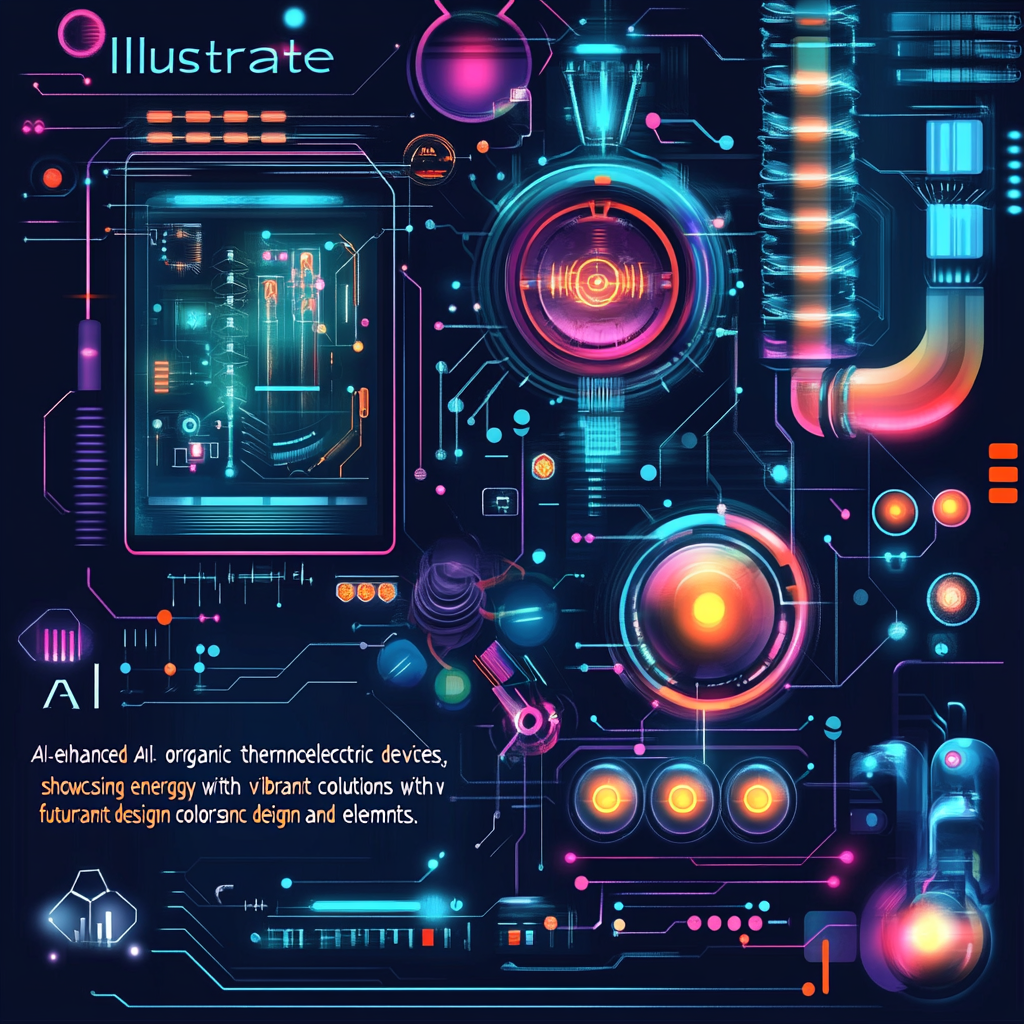
“Smart Design Boosts Organic Thermoelectric Efficiency”
In the exciting world of energy technology, the fusion of artificial intelligence (AI) and organic materials is shaking things up like a well-stirred cocktail. We're diving into the riveting saga of how AI-driven design is optimizing organic thermoelectric devices, transforming them from humble potential into vibrant performance.
First off, let's address the role of AI in the design realm. Picture this: a cutting-edge AI framework that doesn't just crunch numbers or spit out data, but intelligently designs and discovers high-functioning thermoelectric materials. Sounds futuristic, right? Well, a study from May 2023 has peeled back the curtain. Machine learning algorithms are stepping up, dazzling us with their ability to predict and enhance the thermoelectric properties of materials. We’re talking about speeding up the discovery process in a way that feels like a warp drive for scientists—it’s exhilarating!
Now, you might be wondering how machine learning pulls off this magic trick. These models delve into complex data like a detective scouring for clues, ripping apart layers to reveal the critical ingredients that make materials efficient in their thermoelectric performance. Take a peek at a notable study focusing on feature selection and analysis, which highlights the methods used to pinpoint those key factors. It’s akin to having a supercharged magnifying glass that finds the diamonds in the rough of thermoelectric materials.
But we’re not stopping there. Let’s shift gears to organic thermoelectric generators (OTEGs)—the unsung heroes of this energy saga. With the right AI-driven designs, these generators can leap to new heights. A mesmerizing study unveils how tuning the interfacial energetics between metal contacts and organic polymers can supercharge power generation. By simply adjusting the work function of these metal contacts, the output can swing dramatically—three orders of magnitude difference! Imagine powering your devices just by tweaking elements that were once seen as mere background players!
What’s truly fascinating are the materials themselves. Organic thermoelectric materials like PEDOT:PSS are currently riding the innovation wave, getting serious attention for their role in wearable electronics. They’re not just retrofitted for fun; they become superstars when treated with ionic liquids and concentrated sulfuric acid (H₂SO₄). These treatments can skyrocket their power factor by 15 times! Suddenly, what looked like a humble piece of polymer turns into a force of nature, marching forth with improved electrical conductivity and Seebeck coefficients. Who knew chemistry could get this thrilling?
But wait, there’s more to our tale! The assembly and application of these organic materials play an equally pivotal role. Strategies like vacuum filtration and cold-pressing are not just fancy jargon—they actually enhance the thermoelectric properties of the materials. Imagine the transformative effect of crafting those PEDOT:PSS/Cu₂S composite films. They’re not just going to lounge around; they’re geared up to power low-energy devices with enhanced power factors and output.
We’re also seeing the emergence of bulk organic thermoelectric materials that are turning heads. Think hydrogels and creative composites boasting impressive power densities and thermosensing capabilities. We might even be on the brink of real-time temperature monitoring and wearable electronics that feel like something straight out of a sci-fi flick. These materials are shaping the future one nifty gadget at a time.
Yet, as thrilling as the advancement of organic thermoelectric devices can be, challenges linger. The integration of these materials into wearable electronics is a tantalizing prospect that begs the question: can we harness our own body heat to power our devices? It’s a tantalizing dream, but manufacturers must conquer obstacles like durability, flexibility, and scalability to reach that exhilarating future.
AI itself is proving to be a catalyst of creativity and innovation. As designers exploit AI to craft thermoelectric materials with bespoke properties, the landscape of energy harvesting and conversion is set to explode with possibilities. Bringing together such cutting-edge technology with material science is nothing short of a fantastic adventure, where every turn shines light on new breakthroughs.
In summary, the interplay of AI and organic thermoelectric technology not only revitalizes our approach to energy generation but also reinforces the notion that we are just scratching the surface of what is possible when the frontiers of science and creativity collide. As we witness the pace of advancements, we can only dream of the amazing applications waiting around the corner, especially in the realm of wearable electronics.
So, are you ready to keep your fingers on the pulse of this dazzling journey through thermoelectric technology and AI-driven innovations? Don’t miss out on any of the updates! Subscribe to our Telegram channel: @channel_neirotoken. Let’s embrace the future of energy together!

